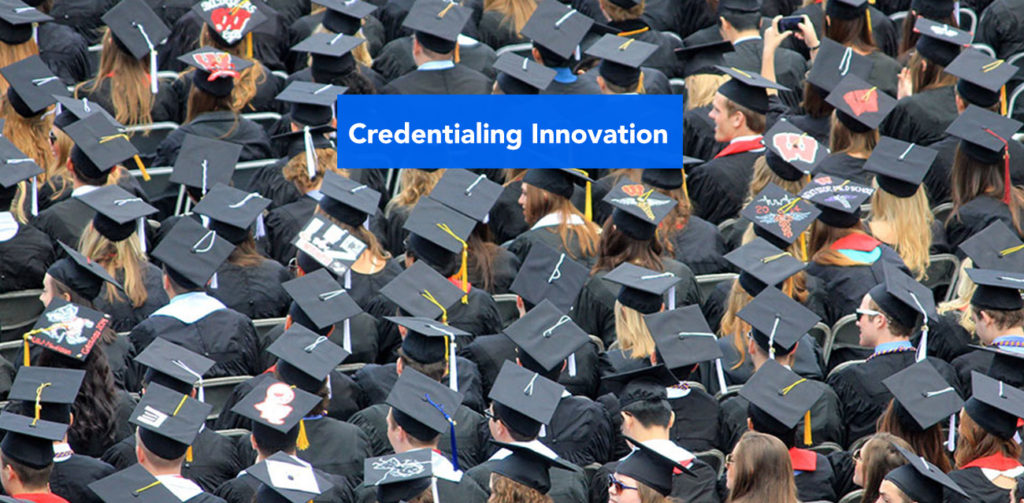Interview with Jonathan Finkelstein, founder and CEO, Credly.
A nationally recognized innovator in the education and workforce development space, Jonathan co-founded HorizonLive (now Blackboard Collaborate) and LearningTimes and has co-authored several books, articles and reports on digital credentials for the U.S. Department of Education. The son of two public school teachers who inspired lifelong learning both inside and beyond the classroom, Jonathan received his AB with honors from Harvard.
What made you decide to start Credly?
Finkelstein discusses the origins of Credly, which began with the conviction that technology could play a greater role in helping to verify the skills and knowledge that people had acquired, especially pertaining to work force needs.
Click here to watch the video.
How have digital credentials changed over the years?
When digital credentials were first developed, there was uncertainty about how employers would react to non-traditional verifications of skills and knowledge. But employers, Finkelstein notes, have now become a driver of digital credentials for their own employees.
Click here to watch the video.
What are the benefits for employers who hire on the basis of skills rather than degrees?
As Finkelstein explains, traditional credentials often don’t tell the full story about applicants, so hiring by skills can yield quick results. Skills-based hiring can reduce the time needed to hire employees while also reducing training time.
Click here to watch the video.
Can you shed light on the idea of a skills gap and communications gap?
In today’s technology-dependent work force, the life cycle of skills is rapid. As Finkelstein points out, traditional education and training can’t keep up, so digital credentials help fill that gap. The communications gap is equally important because employers, education providers, and job seekers often lack a common language to identify skills. Digital credentials provide such a language.
Click here to watch the video.
How do certificates and digital credentials differ?
Traditional certificates are issued in paper and often limited to a transcript. Digital certificates are portable, and the information provided about the skills and competencies acquired is verifiable and secure. They can be easily linked to one’s professional profile, helping to tell a more complete story.
Click here to watch the video.
What are some of the challenges higher education institutions and employers face when getting started with digital credentials?
Schools and employers have to work backwards at the start, identifying desired learning outcomes and life outcomes. That process requires collaboration; a number of schools, for example, have invited employers to participate in the development process, resulting in greater intentionality and transparency.
Click here to watch the video.
How will digital credentials affect the relationship between academic institutions and employers?
In the future, Finkelstein predicts, nearly every member of the labor force will have portable and verifiable credentials. That will make it easier for individuals to move from school to employment and back, as desired, giving individuals more power to navigate their career paths, while allowing for data analysis to discern employment trends and opportunities.
Click here to watch the video.
When is an organization or academic institution ready to start using digital credentials?
The hard work of creating credentials has already been done, as Finkelstein points out. Most schools and employers already have identified learning outcomes and/or required skills or competencies. Now that information needs to be digitized and put into a format and language that will make sense to a third party, and that work can begin immediately.

